This evening at a private event (but streamed live) in Boca Chica, SpaceX CEO Elon Musk revealed their not-so-secret Starship Mark 1 design. On display behind him dwarfing their very first Falcon 1 rocket, the 50 metre high, 9 metre wide (without fins) rocket looks like an absolute beast.
The total, full stack configuration which is to be made up of both the Starship and Super Heavy Booster will stand at 2.5x the height of the Mark 1 or 118 metres. If things run to schedule, we also shouldn’t need to wait too long to see it fly to orbit either!
New Info & Design
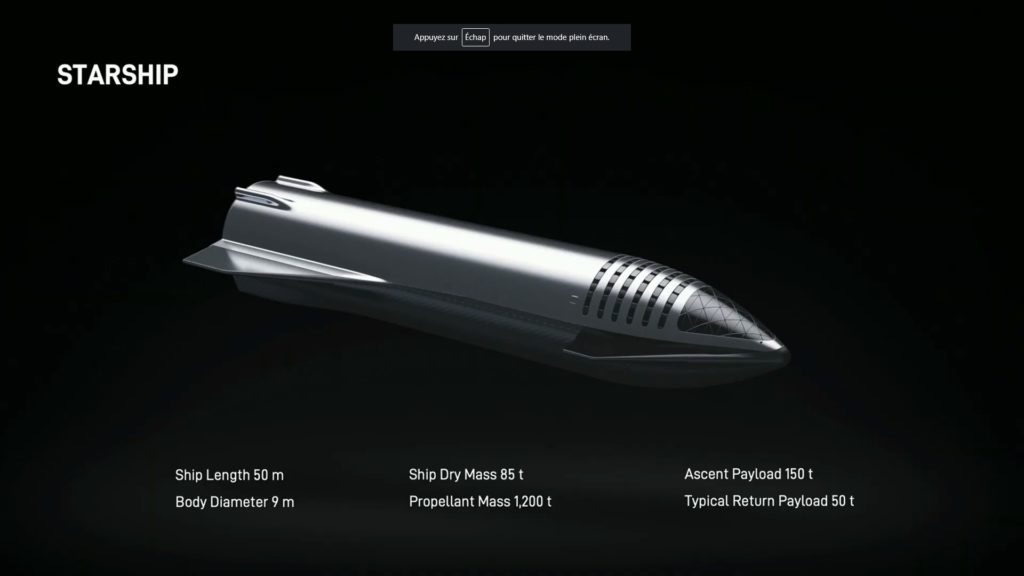
The major talking points were on the new fin design (2 rather than 3) as well as the engine and construction material. Being made entirely from steel this is about 5% of the cost of carbon fibre, is far quicker and easier to build with plus actually provides better thermals during re-entry.
The top and bottom flaps can lever so as to turn or direct the rocket during its decent. This makes the rocket more like a sky diver falling with arms and legs to direct them than your more traditional style rocket.
While in the previous Starship designs the fins served as the rockets landing legs, this has now been changed and landing legs will be separate.
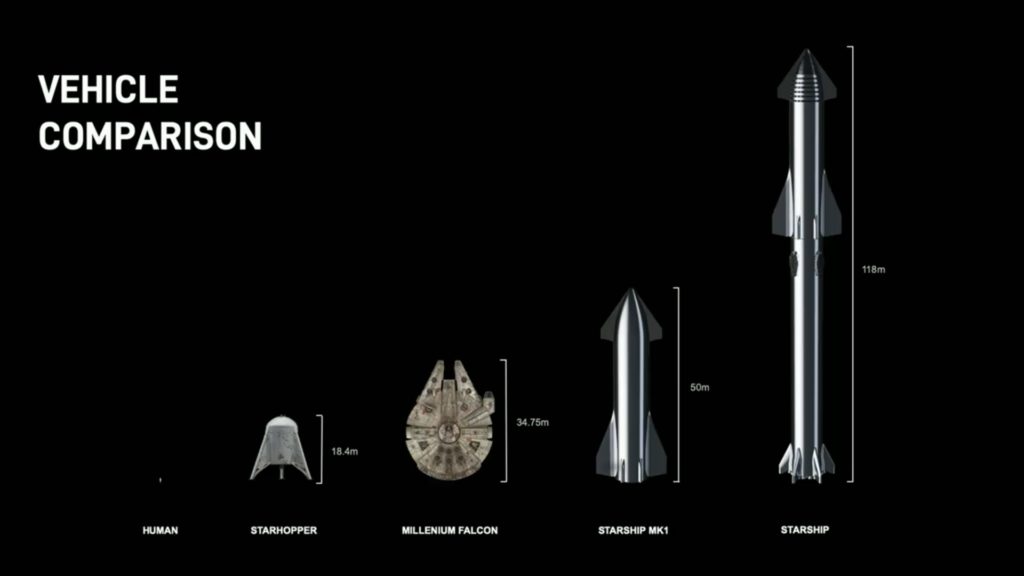
Looking at the overall size the Mark 1 Starship is 50 metres tall while the full stack Booster and final Starship design should be 118 metres. If you’re trying put this number in perspective, according the Wikipedia a normal “story” in an office building is about 4.3 metres high.
This means that the full stack is about as high as a 28 story building. Even the Mark 1 Starship beats out the Millennium Falcon! When they’re all put together it should be quite a site, let alone when it’s actually taking off.
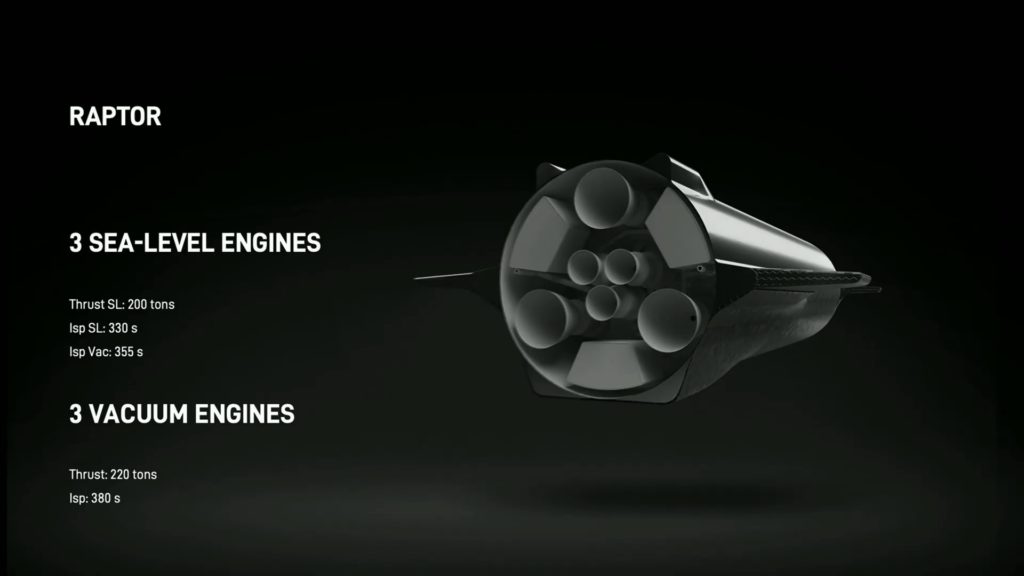
Looking at the back the Startship will have 3 centre sea-level Raptor engines that can gimbal (ie direct the rocket) as well as 3 vacuum engines that will be fixed and only propel it forward.
These will be used to fly the Starship to Mars once in Earth orbit. The Booster on the other hand will have 7 centre gimbal engines as well as anywhere from 24-31 additional fixed engines.

Looking at the underside of the Starship reveals the heat shielding which is made up of rugged ceramic tiles. These, combined with the high temperature resistance of the stainless steel body allow it to not just survive reentry, but do so rapidly and repeatedly.

The heat shield tiles themselves are also low maintenance, can be produced rapidly and installed or swapped out quickly too, further enabling rapid re-usability.
It was also revealed by Elon that the entire Mark 1 Starship only took less than 5% of the SpaceX company around 4-5 months to build from start to finish!
Considering this is their first build and future builds will be exponentially quicker, 4-5 months is ridiculously quick for such a huge rocket.
Coming Schedule
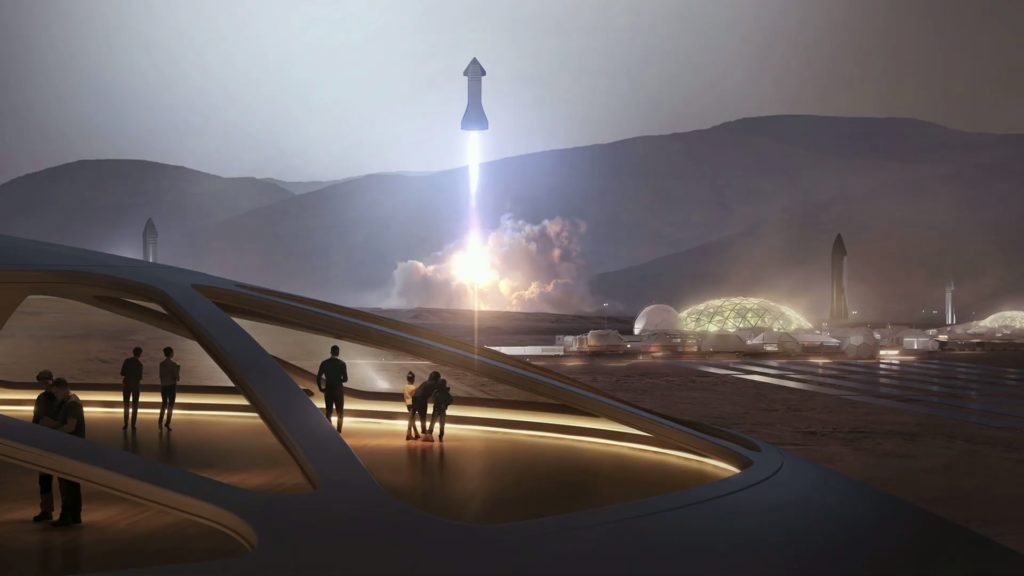
It wouldn’t be an Elon talk if he didn’t speculate on the future and make bold, almost unbelievable time commitments so here are a few he rattled off in quick succession regarding the Starship rocket:
- Mark 1 was on display and fully built during the talk
- Mark 2 should be built in a couple months (for 20 km hopper test)
- Mark 3 should be built within 3 months
- Mark 4 should be built within 4-5 months
- Mark 1 and 2 will have 3 engines
- Mark 3 and 4 will have 6 engines
- SpaceX will go to orbit with Mark 4 or Mark 5
- ie. SpaceX’s aim is to reach orbit in < 6 months with Starship
- Elon believes these estimates to be accurate to within a few months
Yes. He is talking about having four fully built Starship rockets and flying one of them to orbit by March 2020.
Now I’m the first to agree that Elon basically never achieves these goals on time. But he virtually always achieves them eventually and if he’s only 1-2 months off with his estimates that will still be amazing to watch.
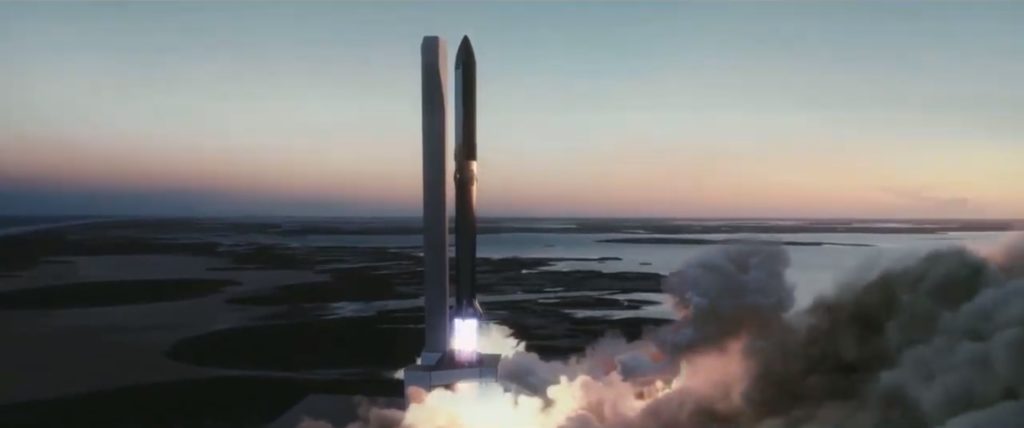
SpaceX also aims to build at least two Starship rockets at each site (the Cape and Boca Chica), then start to build the Super Heavy Booster. In order to fully build the Booster though they will need to increase their Raptor engine production line and obviously, build all the engines for the first Booster.
As they need around 24-31 Raptor engines per Booster, this is the main thing slowing them down. They can build the actual structure of the Booster right now and quite quickly apparently, but there’s not much point if there’s no engines to put in it.
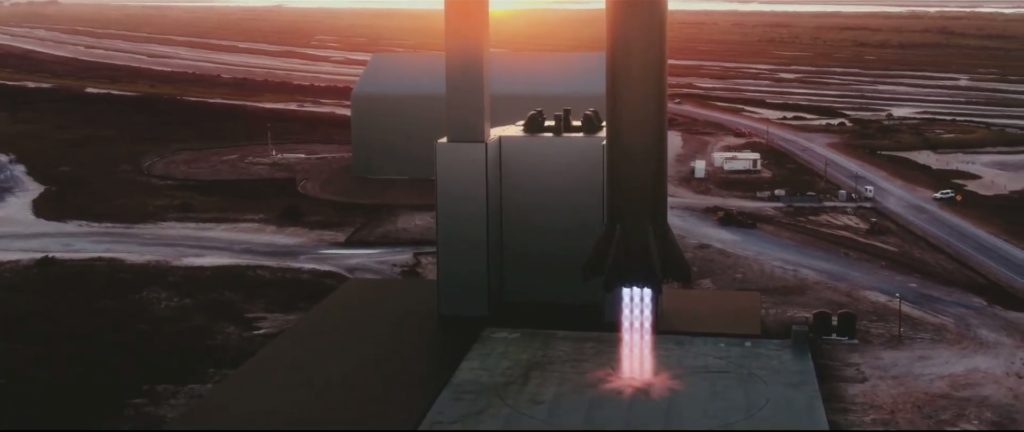
Currently they produce 1 Raptor engine every 8-10 days. They expect to be able to produce 1 every couple of days within a few months time. Their overall target though is to get to producing 1 per day by Q1 next year or sooner.
Once they’re able to produce engines quicker they’ll be increasing the number of Booster’s built along with the number of Starship’s built.
On top of all the above, Elon also replied to one question saying that he’s targeting not just getting to orbit with Starship within 6 months, but that we could even see it flying people into orbit sometime next year.
End Game Capacity
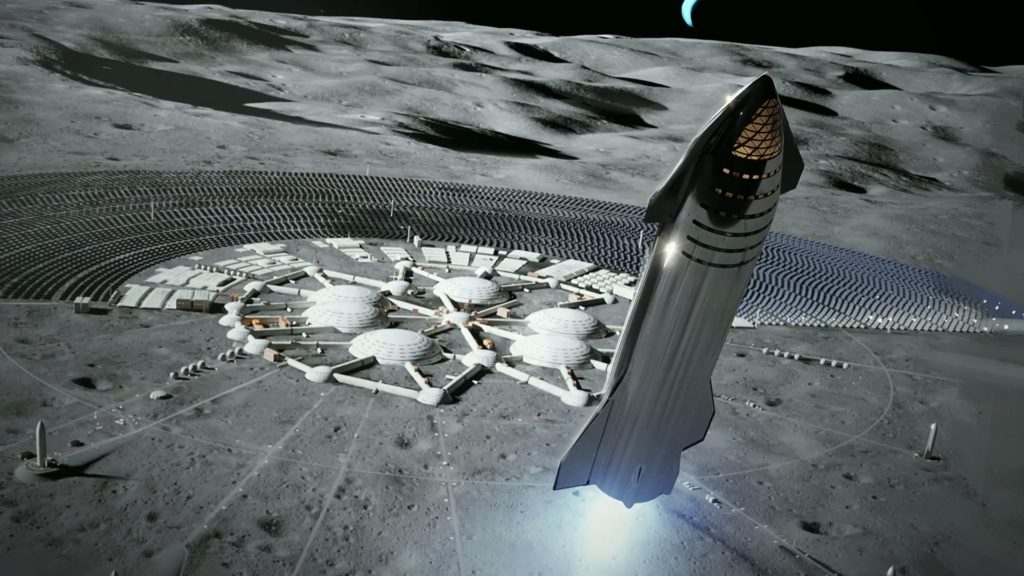
Looking further into the future Elon interestingly went through a few “back of the envelope” calculations that, whilst possibly might never happen (or at least may take many more years to achieve) never the less gives a unique window into his train of thought.
Specifically he was talking about the amount of cargo Starship will be able to take to orbit, which is 150 tonnes. He then went on to say that when he speaks of rapid re-usability he really means it. To the tune of being able to launch and land the Booster upwards of 20 times per day!
The Starship – due to constraints with having to sync it’s orbit up with the landing site – could do around 3-4 launches and landings a day. So, taking a rough estimate, we have 3 launches of 150 tonnes into orbit per day, 365 days a year. This gives around 1,000 flights per year or 150,000 tonnes of cargo per Starship, per year.
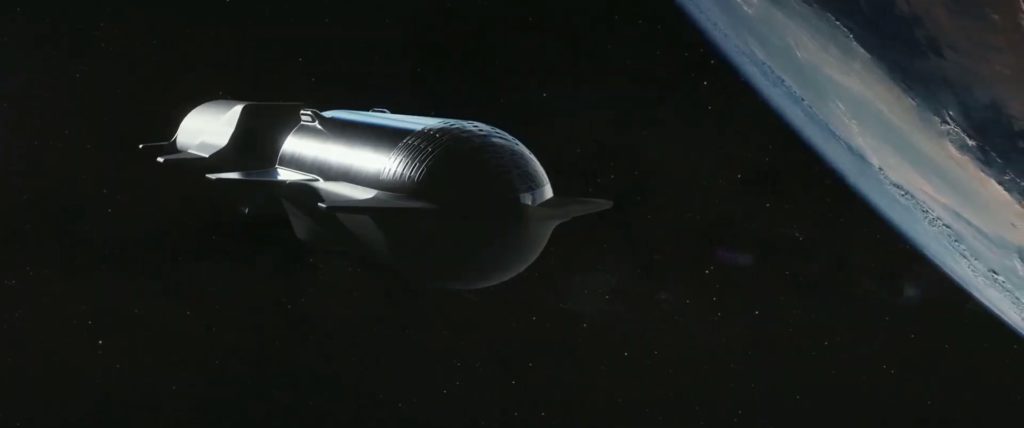
But that’s just one Starship. How about 20 of them all doing this? That’s 3 million tonnes of cargo to orbit capacity per year! This (estimates Elon) represents around 1,000 times the capacity of all current rockets, all launching simultaneously, including all of SpaceX’s.
Of course this is just Elon spinning numbers and won’t be achieved for a number of years, maybe over a decade, but as said it shows where he’s pushing SpaceX to go. For reference, the ISS is around 420 tonnes and has about the same pressurised volume as what just 1 Starship will have.
Other Fun Remarks
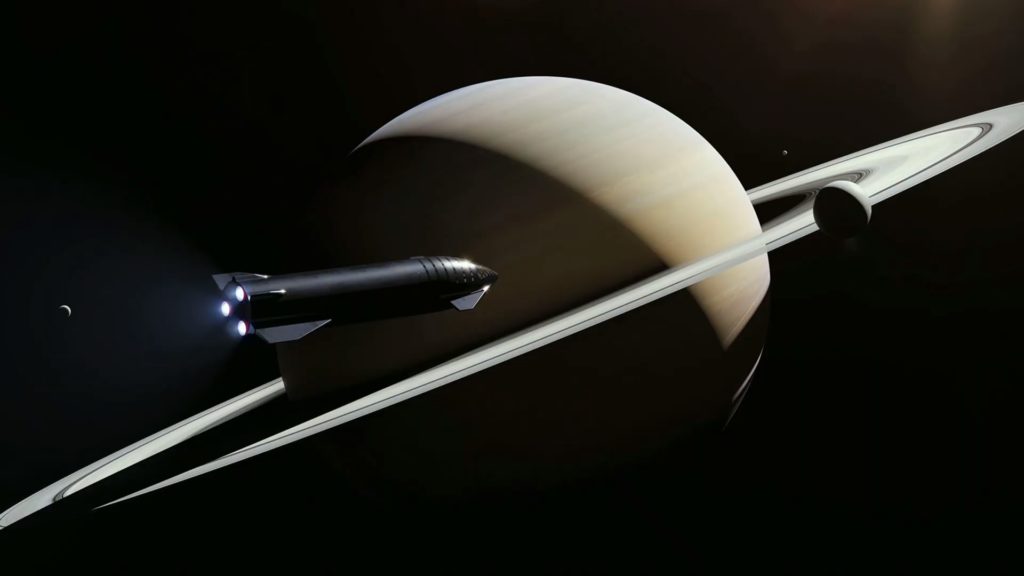
Some other fun bits and pieces that were covered included the confirmation that all Tesla’s are totally able to drive on Mars (and thus presumably the Moon too) without any modifications. You might still want to wear a space suit though!
Elon also thinks that a The Boring Company boring machine would be a great thing to take to Mars. He also mentioned that to begin with SpaceX will be sending at least a couple of unmanned, automatically landing Starships to Mars before they send any actual people.
Finally he also quickly described how the production of the rocket fuel will ultimately be done locally and very similarly to how it’s done on Mars. By sucking carbon and oxygen out of the air and combining it with water, all powered by renewable energy. As a result, the rockets should not only be renewable but also carbon neutral which is quite cool!
The benefits include: 1) How to get those silky smooth videos that everyone loves to watch, even if you're new 2) How to fly your drone, from taking off to the most advanced flight modes 3) Clear outlines of how to fly with step-by-step instructional demonstrations and more 4) Why flying indoors often results in new pilots crashing their drone 5) What other great 3rd party apps are out there to get the most out of your drone 6) A huge mistake many pilots make when storing their drone in the car and how to avoid it 7) How to do all of these things whilst flying safely and within your countries laws.




